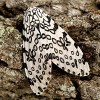 The giant leopard moth is our largest eastern tiger moth. It was formerly in the family Arctiidae, which now composes the subfamily Arctiinae in the family Erebidae. Giant leopard moths are nocturnal. Males are commonly attracted to lights at night. Sometimes dozens of males come to bright lights set out in good habitat. This 6-page fact sheet was written by Donald W. Hall, and published by the UF Department of Entomology and Nematology, August 2014.
The giant leopard moth is our largest eastern tiger moth. It was formerly in the family Arctiidae, which now composes the subfamily Arctiinae in the family Erebidae. Giant leopard moths are nocturnal. Males are commonly attracted to lights at night. Sometimes dozens of males come to bright lights set out in good habitat. This 6-page fact sheet was written by Donald W. Hall, and published by the UF Department of Entomology and Nematology, August 2014.
http://edis.ifas.ufl.edu/in1043
Tag: Featured Creatures collection
Hydrellia fly parasitic wasp Trichopria columbiana Ashmead (Insecta: Hymenoptera: Diapriidae)
 Trichopria columbiana is a parasitoid of Hydrellia fly species. Depending on the ecological role of the host species, it can have a positive or negative effect on biological control. Some Hydrellia species feed on the invasive aquatic weed hydrilla. After its introduction into the U.S. by the aquarium industry in the 1950s (Langeland 1996), various control methods, including biological control, were developed and used to manage infestations. Classical biological control studies were initiated in the 1970s, which led to the release of four insects in the U.S., two of which were the leaf-mining ephydrid flies, Hydrellia pakistanae and Hydrellia balciunasi. Despite successful establishment and range expansion of the Asian hydrilla leaf mining fly, Hydrellia pakistanae, population levels of the insect and associated plant damage have remained low. One of the potentially limiting biotic factors is parasitism by the native endoparasitic wasp Trichopria columbiana. This 6-page fact sheet was written by Byron R. Coon, Nathan E. Harms, Michael J. Grodowitz, Emma N.I. Weeks, and James P. Cuda, and published by the UF Department of Entomology and Nematology, June 2014.
Trichopria columbiana is a parasitoid of Hydrellia fly species. Depending on the ecological role of the host species, it can have a positive or negative effect on biological control. Some Hydrellia species feed on the invasive aquatic weed hydrilla. After its introduction into the U.S. by the aquarium industry in the 1950s (Langeland 1996), various control methods, including biological control, were developed and used to manage infestations. Classical biological control studies were initiated in the 1970s, which led to the release of four insects in the U.S., two of which were the leaf-mining ephydrid flies, Hydrellia pakistanae and Hydrellia balciunasi. Despite successful establishment and range expansion of the Asian hydrilla leaf mining fly, Hydrellia pakistanae, population levels of the insect and associated plant damage have remained low. One of the potentially limiting biotic factors is parasitism by the native endoparasitic wasp Trichopria columbiana. This 6-page fact sheet was written by Byron R. Coon, Nathan E. Harms, Michael J. Grodowitz, Emma N.I. Weeks, and James P. Cuda, and published by the UF Department of Entomology and Nematology, June 2014.
http://edis.ifas.ufl.edu/in1040
Hydrilla tuber weevil Bagous affinis Hustache (Insecta: Coleoptera: Curculionidae)
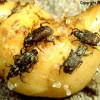 Bagous affinis Hustache is a semi-aquatic weevil that feeds on the aquatic invasive plant Hydrilla verticillata (L.f.) Royle. The larvae of the weevil mine hydrilla tubers, and the adults feed on the submerged stems and leaves. The weevil was discovered during surveys for biological control agents for hydrilla in Pakistan in 1980 and was first introduced to the U.S. in Florida from India in 1987. This 5-page fact sheet was written by Emma Weeks, and published by the UF Department of Entomology and Nematology, June 2014.
Bagous affinis Hustache is a semi-aquatic weevil that feeds on the aquatic invasive plant Hydrilla verticillata (L.f.) Royle. The larvae of the weevil mine hydrilla tubers, and the adults feed on the submerged stems and leaves. The weevil was discovered during surveys for biological control agents for hydrilla in Pakistan in 1980 and was first introduced to the U.S. in Florida from India in 1987. This 5-page fact sheet was written by Emma Weeks, and published by the UF Department of Entomology and Nematology, June 2014.
http://edis.ifas.ufl.edu/in1039
Grass Carp, the White Amur: Ctenopharyngodon idella Cuvier and Valenciennes (Actinopterygii: Cyprinidae: Squaliobarbinae)
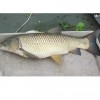 The grass carp, Ctenopharyngodon idella Cuvier and Valenciennes, was imported to the U.S. in 1963 as a biological control agent for hydrilla (Hydrilla verticilliata (L.f.) Royle) and other aquatic plants. Concerns of escape and reproduction, and the potential impacts that colonization of the fish could have on native flora and fauna led to research that developed a non-reproductive fish, which was equally effective in controlling hydrilla. In the warm waters of Florida, with abundant food, grass carp grow quickly at around 2 lbs/month or 0.91 kg/month and may achieve weights of 97 lbs (44 kg). Younger fish and female fish grow faster than older or male fish. Grass carp are the most effective biological control tool that has been identified for hydrilla. This 7-page fact sheet was written by Emma N.I. Weeks and Jeffrey E. Hill, and published by the UF Department of Entomology and Nematology, June 2014.
The grass carp, Ctenopharyngodon idella Cuvier and Valenciennes, was imported to the U.S. in 1963 as a biological control agent for hydrilla (Hydrilla verticilliata (L.f.) Royle) and other aquatic plants. Concerns of escape and reproduction, and the potential impacts that colonization of the fish could have on native flora and fauna led to research that developed a non-reproductive fish, which was equally effective in controlling hydrilla. In the warm waters of Florida, with abundant food, grass carp grow quickly at around 2 lbs/month or 0.91 kg/month and may achieve weights of 97 lbs (44 kg). Younger fish and female fish grow faster than older or male fish. Grass carp are the most effective biological control tool that has been identified for hydrilla. This 7-page fact sheet was written by Emma N.I. Weeks and Jeffrey E. Hill, and published by the UF Department of Entomology and Nematology, June 2014.
http://edis.ifas.ufl.edu/in1038
Hydrilla Stem Weevil Bagous Hydrillae O’Brien
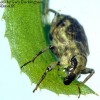 Bagous hydrillae O’Brien is a semi-aquatic weevil that feeds on the aquatic invasive weed Hydrilla verticillata (L.f.) Royle. Larvae of the weevil mine hydrilla stems and the adults feed on the stems and submerged leaves. This weevil was discovered during overseas surveys for biological control agents for hydrilla during the 1980s and was first introduced to the U.S. in Florida in 1991 after extensive host-specificity testing. This 5-page fact sheet was written by Emma Weeks, Jim Cuda, and Michael J. Grodowitz, and published by the UF Department of Entomology and Nematology, June 2014.
Bagous hydrillae O’Brien is a semi-aquatic weevil that feeds on the aquatic invasive weed Hydrilla verticillata (L.f.) Royle. Larvae of the weevil mine hydrilla stems and the adults feed on the stems and submerged leaves. This weevil was discovered during overseas surveys for biological control agents for hydrilla during the 1980s and was first introduced to the U.S. in Florida in 1991 after extensive host-specificity testing. This 5-page fact sheet was written by Emma Weeks, Jim Cuda, and Michael J. Grodowitz, and published by the UF Department of Entomology and Nematology, June 2014.
http://edis.ifas.ufl.edu/in1036
Hydrilla leaf mining flies (unofficial common name) Hydrellia spp. (Insecta: Diptera: Ephydridae)
http://edis.ifas.ufl.edu/in1034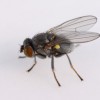 Several native and introduced species of flies in the genus Hydrellia are important because they feed on hydrilla (Hydrilla verticillata L.f. Royle), an invasive aquatic plant that has been classified as a Federal Noxious Weed. Hydrilla has invaded aquatic ecosystems in Florida and across the U.S. Larvae of Hydrellia spp. mine the leaves of hydrilla. In Florida, there are four species that have been associated with the invasive aquatic weed hydrilla: two native species and two species that were introduced for biological control of hydrilla. The native species are Hydrellia bilobifera Cresson and Hydrellia discursa Deonier. The introduced species are Hydrellia pakistanae Deonier and Hydrellia balciunasi Bock. This 6-page fact sheet was written by Emma Weeks and James Cuda, and published by the UF Department of Entomology and Nematology, April 2014.
Several native and introduced species of flies in the genus Hydrellia are important because they feed on hydrilla (Hydrilla verticillata L.f. Royle), an invasive aquatic plant that has been classified as a Federal Noxious Weed. Hydrilla has invaded aquatic ecosystems in Florida and across the U.S. Larvae of Hydrellia spp. mine the leaves of hydrilla. In Florida, there are four species that have been associated with the invasive aquatic weed hydrilla: two native species and two species that were introduced for biological control of hydrilla. The native species are Hydrellia bilobifera Cresson and Hydrellia discursa Deonier. The introduced species are Hydrellia pakistanae Deonier and Hydrellia balciunasi Bock. This 6-page fact sheet was written by Emma Weeks and James Cuda, and published by the UF Department of Entomology and Nematology, April 2014.
Convergent Lady Beetle Hippodamia convergens Guérin-Méneville (Insecta: Coleoptera: Coccinellidae)
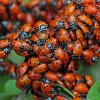 The convergent lady beetle, Hippodamia convergens Guérin-Méneville, is among the most common lady beetle species throughout North America and is an important natural enemy of aphids, scales, thrips, and other soft-bodied insects. It will also feed on pollen and nectar from flowers when prey is scarce. This species can be found in habitats ranging from grasslands, forests, agricultural fields, gardens, and natural parks. It is one of the few natural enemies that are currently wild-collected from mass aggregations for distribution to the pest control industry. This 5-page fact sheet was written by Luis F. Aristizábal and Steven P. Arthurs, and published by the UF Department of Entomology and Nematology, June 2014.
The convergent lady beetle, Hippodamia convergens Guérin-Méneville, is among the most common lady beetle species throughout North America and is an important natural enemy of aphids, scales, thrips, and other soft-bodied insects. It will also feed on pollen and nectar from flowers when prey is scarce. This species can be found in habitats ranging from grasslands, forests, agricultural fields, gardens, and natural parks. It is one of the few natural enemies that are currently wild-collected from mass aggregations for distribution to the pest control industry. This 5-page fact sheet was written by Luis F. Aristizábal and Steven P. Arthurs, and published by the UF Department of Entomology and Nematology, June 2014.
http://edis.ifas.ufl.edu/in1037
Bagrada Bug, Painted Bug, Bagrada Hilaris (Burmeister) (Insecta: Hemiptera: Pentatomidae)
 The bagrada bug is a pest of concern to Florida agriculture, and there are several similar species with which it may be confused. Bagrada bugs have been detected on plant material in trucks traveling across state borders. Twelve interceptions have been made from 2011-2013 at the FDACS agricultural inspection stations along the interstate at the Florida border. Due to the number of recent interceptions, and the ability of this pest to feed on many plants, the bagrada bug has potential to establish in Florida. Therefore, monitoring, surveillance, and educational efforts have begun in Florida to facilitate early detection and rapid response as the spread of the bagrada bug continues to other areas. This 7-page fact sheet was written by Eric LeVeen and Amanda C. Hodges, and published by the UF Department of Entomology and Nematology, July 2014.
The bagrada bug is a pest of concern to Florida agriculture, and there are several similar species with which it may be confused. Bagrada bugs have been detected on plant material in trucks traveling across state borders. Twelve interceptions have been made from 2011-2013 at the FDACS agricultural inspection stations along the interstate at the Florida border. Due to the number of recent interceptions, and the ability of this pest to feed on many plants, the bagrada bug has potential to establish in Florida. Therefore, monitoring, surveillance, and educational efforts have begun in Florida to facilitate early detection and rapid response as the spread of the bagrada bug continues to other areas. This 7-page fact sheet was written by Eric LeVeen and Amanda C. Hodges, and published by the UF Department of Entomology and Nematology, July 2014.
http://edis.ifas.ufl.edu/in1041
Aster leafminer moth Leucospilapteryx venustella (Clemens) (Insecta: Lepidoptera: Gracillariidae)
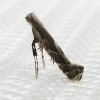 Leucospilapteryx venustella (Clemens) (Lepidoptera: Gracillariidae) is a small, mostly light brown moth that during its larval stages creates mines in the leaves of plants in the family Asteraceae. Feeding damage by the early instars is characterized by serpentine mines that are expanded by later instars to form tentiform or blotch mines. This 4-page fact sheet was written by Rodrigo Diaz, Esteban Tapia, Veronica Manrique, William Overholt, and Donald Davis, and published by the UF Department of Entomology and Nematology, February 2014.
Leucospilapteryx venustella (Clemens) (Lepidoptera: Gracillariidae) is a small, mostly light brown moth that during its larval stages creates mines in the leaves of plants in the family Asteraceae. Feeding damage by the early instars is characterized by serpentine mines that are expanded by later instars to form tentiform or blotch mines. This 4-page fact sheet was written by Rodrigo Diaz, Esteban Tapia, Veronica Manrique, William Overholt, and Donald Davis, and published by the UF Department of Entomology and Nematology, February 2014.
http://edis.ifas.ufl.edu/in1029
Corn wireworm Melanotus communis Gyllenhal (Insecta: Coleoptera: Elateridae)
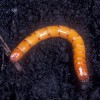 Insects in the family Elateridae are commonly known as click beetles. Their name comes from the clicking sound they make while attempting to right themselves after falling or being placed on their backs. The larvae of click beetles are called wireworms. The corn wireworm is a serious agricultural pest and was added to the EPPO A1 action list of quarantine pests in 2002. This 6-page fact sheet was written by Harsimran K. Gill, Gurminder Chahil, Gaurav Goyal, Jennifer L. Gillett-Kaufman and Ronald Cherry, and published by the UF Department of Entomology and Nematology, January 2014.
Insects in the family Elateridae are commonly known as click beetles. Their name comes from the clicking sound they make while attempting to right themselves after falling or being placed on their backs. The larvae of click beetles are called wireworms. The corn wireworm is a serious agricultural pest and was added to the EPPO A1 action list of quarantine pests in 2002. This 6-page fact sheet was written by Harsimran K. Gill, Gurminder Chahil, Gaurav Goyal, Jennifer L. Gillett-Kaufman and Ronald Cherry, and published by the UF Department of Entomology and Nematology, January 2014.
http://edis.ifas.ufl.edu/in1025
Hydrilla leafcutter moth (unofficial common name) Parapoynx diminutalis Snellen (Insecta: Lepidoptera: Crambidae)
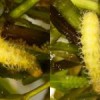 Parapoynx diminutalis Snellen is an adventive Asian moth with an aquatic larval stage. The moth is found associated with a variety of water bodies including river backwaters, lakes, and ponds. The aquatic larvae commonly attack hydrilla and other aquatic plants. The moth was identified in 1971 in India and Pakistan during scouting trips to attempt to determine potential biological control agents for hydrilla. Despite having potential for hydrilla destruction, the moth was declared to be a generalist feeder and unsuitable for release into U.S. water bodies for hydrilla control. But the moth was later found in Florida in 1976 by United States Department of Agriculture technicians who were testing herbicides for hydrilla control. The larvae found on hydrilla were observed to be eating the invasive weed. The pathway, method, or time of the moth’s arrival remains unknown. This 5-page fact sheet was written by Julie Baniszewski, Emma N.I. Weeks, and James P. Cuda, and published by the UF Department of Entomology and Nematology, January 2014.
Parapoynx diminutalis Snellen is an adventive Asian moth with an aquatic larval stage. The moth is found associated with a variety of water bodies including river backwaters, lakes, and ponds. The aquatic larvae commonly attack hydrilla and other aquatic plants. The moth was identified in 1971 in India and Pakistan during scouting trips to attempt to determine potential biological control agents for hydrilla. Despite having potential for hydrilla destruction, the moth was declared to be a generalist feeder and unsuitable for release into U.S. water bodies for hydrilla control. But the moth was later found in Florida in 1976 by United States Department of Agriculture technicians who were testing herbicides for hydrilla control. The larvae found on hydrilla were observed to be eating the invasive weed. The pathway, method, or time of the moth’s arrival remains unknown. This 5-page fact sheet was written by Julie Baniszewski, Emma N.I. Weeks, and James P. Cuda, and published by the UF Department of Entomology and Nematology, January 2014.
http://edis.ifas.ufl.edu/in1024
Erythrina leafminer (suggested common name); Leucoptera erythrinella Busck, 1900 (Insecta: Lepidoptera: Lyonetiidae)
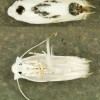 The erythrina leafminer is a member of the genus Leucoptera, which are leaf borers that can cause severe damage to plant crops, such as coffee or apples. Even though these moths are 1/20 to 1/10 the size of an average moth, they can cause serious damage. Leucoptera erythrinella is a pest of the coral bean and other members of the genus Erythrina. The larvae feed inside the leaves, making elaborate and characteristic mines, which from a distance appear to be discolorations of the leaf itself. This 5-page fact sheet was written by Andrei Sourakov, and published by the UF Department of Entomology and Nematology, January 2014.
The erythrina leafminer is a member of the genus Leucoptera, which are leaf borers that can cause severe damage to plant crops, such as coffee or apples. Even though these moths are 1/20 to 1/10 the size of an average moth, they can cause serious damage. Leucoptera erythrinella is a pest of the coral bean and other members of the genus Erythrina. The larvae feed inside the leaves, making elaborate and characteristic mines, which from a distance appear to be discolorations of the leaf itself. This 5-page fact sheet was written by Andrei Sourakov, and published by the UF Department of Entomology and Nematology, January 2014.
http://edis.ifas.ufl.edu/in1023
Psilido, Boreioglycaspis melaleucae Moore (Insecta: Hemiptera: Psyllidae)
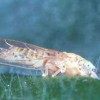 El árbol Melaleuca quinquenervia (Cav.) S. T. Blake (Myrtaceae), conocido como corteza de papel, es una especie invasora agresiva en varios ecosistemas del sur de Florida, incluyendo los Everglades. Melaleuca está considerado una plaga porque desplaza la vegetación nativa y degrada el hábitat de especies silvestres; además aumenta el peligro de incendios y puede causar problemas a la salud humana (Rayamajhi et al. 2002). El Departamento de Agricultura de los Estados Unidos (USDA) y el Servicio de Investigación Agrícola (ARS), bajo permiso federal y estatal, introdujeron el psílido Boreioglycaspis melaleucae en Florida en el Condado de Broward, en Febrero del 2002 como un agente potencial de control biológico de melaleuca. This 5-page fact sheet was written by Susan A. Wineriter, Susan E. Halbert, and James Cuda, and published by the UF Department of Entomology and Nematology, December 2013.
El árbol Melaleuca quinquenervia (Cav.) S. T. Blake (Myrtaceae), conocido como corteza de papel, es una especie invasora agresiva en varios ecosistemas del sur de Florida, incluyendo los Everglades. Melaleuca está considerado una plaga porque desplaza la vegetación nativa y degrada el hábitat de especies silvestres; además aumenta el peligro de incendios y puede causar problemas a la salud humana (Rayamajhi et al. 2002). El Departamento de Agricultura de los Estados Unidos (USDA) y el Servicio de Investigación Agrícola (ARS), bajo permiso federal y estatal, introdujeron el psílido Boreioglycaspis melaleucae en Florida en el Condado de Broward, en Febrero del 2002 como un agente potencial de control biológico de melaleuca. This 5-page fact sheet was written by Susan A. Wineriter, Susan E. Halbert, and James Cuda, and published by the UF Department of Entomology and Nematology, December 2013.
http://edis.ifas.ufl.edu/in1019
Sri Lankan weevil Myllocerus undecimpustulatus undatus Marshall
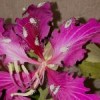 Myllocerus undecimpustulatus undatus Marshall, the Sri Lankan weevil, is a plant pest with a wide range of hosts. This weevil spread from Sri Lanka into India and then Pakistan where many subspecies of Myllocerus undecimpustulatus Faust are considered pests of more than 20 crops. In the United States, the Sri Lankan weevil was first identified on Citrus sp. in Pompano Beach a city in Broward County Florida. Three specimens were identified by Dr. Charles W. O’Brien, first as Myllocerus undecimpustulatus, a species native to southern India, and then again as Myllocerus undatus Marshall native to Sri Lanka, finally as Myllocerus undecimpustulatus undatus Marshall to show its status as a subspecies. This 4-page fact sheet was written by Anita Neal, and published by the UF Department of Entomology and Nematology, November 2013.
Myllocerus undecimpustulatus undatus Marshall, the Sri Lankan weevil, is a plant pest with a wide range of hosts. This weevil spread from Sri Lanka into India and then Pakistan where many subspecies of Myllocerus undecimpustulatus Faust are considered pests of more than 20 crops. In the United States, the Sri Lankan weevil was first identified on Citrus sp. in Pompano Beach a city in Broward County Florida. Three specimens were identified by Dr. Charles W. O’Brien, first as Myllocerus undecimpustulatus, a species native to southern India, and then again as Myllocerus undatus Marshall native to Sri Lanka, finally as Myllocerus undecimpustulatus undatus Marshall to show its status as a subspecies. This 4-page fact sheet was written by Anita Neal, and published by the UF Department of Entomology and Nematology, November 2013.
http://edis.ifas.ufl.edu/in1016
Rugose spiraling whitefly Aleurodicus rugioperculatus Martin (Hemiptera: Aleyrodidae)
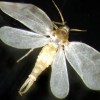 A new addition on the list of whitefly species found in Florida, Aleurodicus rugioperculatus Martin, was originally called the gumbo limbo spiraling whitefly, but is now named the rugose spiraling whitefly. Being a fairly new species to science – identified less than a decade ago, not much information is available about this pest. It is an introduced pest, endemic to Central America, and was reported for the first time in Florida from Miami-Dade County in 2009. Since then it has become an escalating problem for homeowners, landscapers, businesses, and governmental officials throughout the southern coastal counties of Florida. Feeding by this pest not only causes stress to its host plant, but the excessive production of wax and honeydew creates an enormous nuisance in infested areas. The presence of honeydew results in the growth of fungi called sooty mold, which then turns everything in the vicinity covered with honeydew black with mold. This 5-page fact sheet was written by Vivek Kumar, Cindy L. McKenzie, Catharine Mannion, Ian Stocks, Trevor Smith, and Lance S. Osborne, and published by the UF Department of Entomology and Nematology, October 2013.
A new addition on the list of whitefly species found in Florida, Aleurodicus rugioperculatus Martin, was originally called the gumbo limbo spiraling whitefly, but is now named the rugose spiraling whitefly. Being a fairly new species to science – identified less than a decade ago, not much information is available about this pest. It is an introduced pest, endemic to Central America, and was reported for the first time in Florida from Miami-Dade County in 2009. Since then it has become an escalating problem for homeowners, landscapers, businesses, and governmental officials throughout the southern coastal counties of Florida. Feeding by this pest not only causes stress to its host plant, but the excessive production of wax and honeydew creates an enormous nuisance in infested areas. The presence of honeydew results in the growth of fungi called sooty mold, which then turns everything in the vicinity covered with honeydew black with mold. This 5-page fact sheet was written by Vivek Kumar, Cindy L. McKenzie, Catharine Mannion, Ian Stocks, Trevor Smith, and Lance S. Osborne, and published by the UF Department of Entomology and Nematology, October 2013.
http://edis.ifas.ufl.edu/in1015
Eastern Bloodsucking Conenose, Triatoma sanguisuga (LeConte) (Hemiptera: Reduviidae: Triatominae)
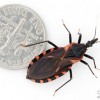 The eastern bloodsucking conenose belongs to the subfamily Triatominae, known as the kissing bugs. Despite their affectionate vernacular name, they are particularly threatening “assassin bugs” who require blood meals to survive and reproduce. They are a known vector of American trypanosomiasis (or Chagas Disease) in South America, a debilitating illness caused by the parasite Trypanosoma cruzi. This disease is a problem in South and Central America and has been detected in the United States, but has not been found in Florida. This 4-page fact sheet was written by John L. Capinera, and published by the UF Department of Entomology and Nematology, November 2013.
The eastern bloodsucking conenose belongs to the subfamily Triatominae, known as the kissing bugs. Despite their affectionate vernacular name, they are particularly threatening “assassin bugs” who require blood meals to survive and reproduce. They are a known vector of American trypanosomiasis (or Chagas Disease) in South America, a debilitating illness caused by the parasite Trypanosoma cruzi. This disease is a problem in South and Central America and has been detected in the United States, but has not been found in Florida. This 4-page fact sheet was written by John L. Capinera, and published by the UF Department of Entomology and Nematology, November 2013.
http://edis.ifas.ufl.edu/in1018
Green orchid bee Euglossa dilemma Friese (Insecta: Hymenoptera: Apidae)
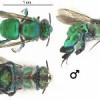 Green orchid bees are a quite conspicuous and charismatic species. This is mostly due to their large size and bright metallic-green coloration. They are very fast and agile flyers, and can be seen quickly darting from flower to flower separated by long periods of hovering. Male orchid bees collect fragrant volatile compounds from their environment and present them to females by fanning their wings and “spray ventilating” their bouquet for the inspection of prospective mates. In Florida, male green orchid bees are attracted to chemicals produced by certain wood-rot fungi, decomposing vegetation, perfume flowers, and certain essential oils such as clove and cinnamon oil. Male green orchid bees can be quickly and easily attracted and observed by soaking a small piece of paper with clove oil and placing it outside. This 4-page fact sheet was written by Aaron Mullins, and published by the UF Department of Entomology and Nematology, October 2013.
Green orchid bees are a quite conspicuous and charismatic species. This is mostly due to their large size and bright metallic-green coloration. They are very fast and agile flyers, and can be seen quickly darting from flower to flower separated by long periods of hovering. Male orchid bees collect fragrant volatile compounds from their environment and present them to females by fanning their wings and “spray ventilating” their bouquet for the inspection of prospective mates. In Florida, male green orchid bees are attracted to chemicals produced by certain wood-rot fungi, decomposing vegetation, perfume flowers, and certain essential oils such as clove and cinnamon oil. Male green orchid bees can be quickly and easily attracted and observed by soaking a small piece of paper with clove oil and placing it outside. This 4-page fact sheet was written by Aaron Mullins, and published by the UF Department of Entomology and Nematology, October 2013.
http://edis.ifas.ufl.edu/in1013
Cabbage aphid Brevicoryne brassicae Linnaeus (Insecta: Hemiptera: Aphididae)
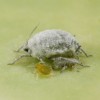 Cabbage aphids cause significant yield losses to many crops of the family Brassicaceae, which includes the mustards and crucifers. It is important to have a comprehensive understanding of this pest and its associated control measures so that its spread and damage can be prevented. This 5-page fact sheet was written by Harsimran Kaur Gill, Harsh Garg, and Jennifer L. Gillett-Kaufman, and published by the UF Department of Entomology and Nematology, October 2013.
Cabbage aphids cause significant yield losses to many crops of the family Brassicaceae, which includes the mustards and crucifers. It is important to have a comprehensive understanding of this pest and its associated control measures so that its spread and damage can be prevented. This 5-page fact sheet was written by Harsimran Kaur Gill, Harsh Garg, and Jennifer L. Gillett-Kaufman, and published by the UF Department of Entomology and Nematology, October 2013.
http://edis.ifas.ufl.edu/in1014
Ladybird beetles – recent immigrants to Florida (Insecta: Coleoptera: Coccinellidae)
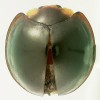 Since the publication of the Florida beetles checklist, a few ladybird beetles have become established in the state, some well-known and extensively documented and some little noticed and previously unreported. It is these latter species that are covered in this publication. All of the listed species are represented by voucher specimens in the Florida State Collection of Arthropods. Species previously known from Florida are reported by Frank and Mizell (2012) with emphasis on natural history. This 5-page fact sheet was written by Michael C. Thomas and Orland J. Blanchard, Jr., and published by the UF Department of Entomology and Nematology, October 2013.
Since the publication of the Florida beetles checklist, a few ladybird beetles have become established in the state, some well-known and extensively documented and some little noticed and previously unreported. It is these latter species that are covered in this publication. All of the listed species are represented by voucher specimens in the Florida State Collection of Arthropods. Species previously known from Florida are reported by Frank and Mizell (2012) with emphasis on natural history. This 5-page fact sheet was written by Michael C. Thomas and Orland J. Blanchard, Jr., and published by the UF Department of Entomology and Nematology, October 2013.
http://edis.ifas.ufl.edu/in1012
Woolly oak aphids Stegophylla brevirostris Quednau and Diphyllaphis microtrema Quednau (Insecta: Hemiptera: Aphididae)
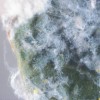 Woolly oak aphids are conspicuous pests on oak, because they are covered with large amounts of flocculent wax. Two genera of woolly oak aphids occur in Florida, each including one known native Florida species. One species, Stegophylla brevirostris Quednau, is common, and the other, Diphyllaphis microtrema Quednau, is rare. This 3-page fact sheet was written by Susan E. Halbert, and published by the UF Department of Entomology and Nematology, October 2013.
Woolly oak aphids are conspicuous pests on oak, because they are covered with large amounts of flocculent wax. Two genera of woolly oak aphids occur in Florida, each including one known native Florida species. One species, Stegophylla brevirostris Quednau, is common, and the other, Diphyllaphis microtrema Quednau, is rare. This 3-page fact sheet was written by Susan E. Halbert, and published by the UF Department of Entomology and Nematology, October 2013.
http://edis.ifas.ufl.edu/in1011